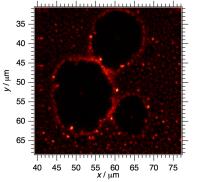Article,
Promoting Singlet/triplet Exciton Transformation in Organic Optoelectronic Molecules: Role of Excited State Transition Configuration
Scientific Reports, 7 (1): 6225-- (2017)
DOI: 10.1038/s41598-017-05339-4
Abstract
Exciton transformation, a non-radiative process in changing the spin multiplicity of an exciton usually between singlet and triplet forms, has received much attention recently due to its crucial effects in manipulating optoelectronic properties for various applications. However, current understanding of exciton transformation mechanism does not extend far beyond a thermal equilibrium of two states with different multiplicity and it is a significant challenge to probe what exactly control the transformation between the highly active excited states. Here, based on the recent developments of three types of purely organic molecules capable of efficient spin-flipping, we perform ab initio structure/energy optimization and similarity/overlap extent analysis to theoretically explore the critical factors in controlling the transformation process of the excited states. The results suggest that the states having close energy levels and similar exciton characteristics with same transition configurations and high heteroatom participation are prone to facilitating exciton transformation. A basic guideline towards the molecular design of purely organic materials with facile exciton transformation ability is also proposed. Our discovery highlights systematically the critical importance of vertical transition configuration of excited states in promoting the singlet/triplet exciton transformation, making a key step forward in excited state tuning of purely organic optoelectronic materials.
